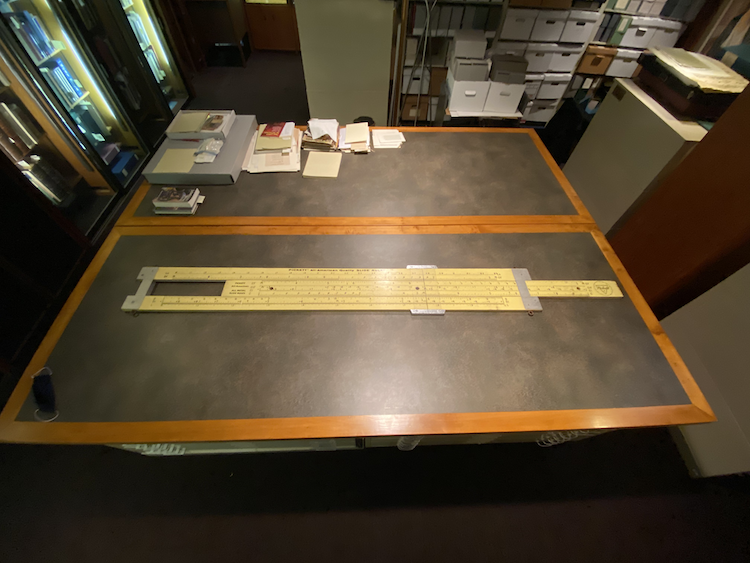
Mary Shaw, A.J. Perlis Professor of Computer Science in the School of Computer Science recently gave her papers to the University Archives, where they will eventually be made available for research into her long and important career in computer science.
Some artifacts and computing ephemera outside the scope of the Archives were given to Special Collections. The main event in the Special Collections acquisition is a seven-foot slide rule, a mechanical calculator that can be used for higher-order mathematical operations, including division, multiplication, logarithms, and exponentiation. Curator of Special Collections Sam Lemley recently transported the oversized item from Shaw's office to the Fine and Rare Book Room on the fourth floor of Hunt Library.
"From what I've seen, this particular slide rule was designed to be mounted in a classroom for group use, hence its size," said Lemley. "It has two eye bolts on its top edge, from which it would have been suspended on cables or wires."
Joining the Traub-McCorduck collection of early computing artifacts and cryptographic machines, Shaw's slide rule adds to an emerging area of collecting focus for Special Collections; namely, the history of computing, pre-digital mathematical apparatus, and other calculating machines.
Another recent acquisition in this area is an early seventeenth-century edition of John Napier's description of a wooden calculating device known as Napier's Bones, the ancestor of the slide rule. Special Collections also holds an early edition of Napier's groundbreaking work on logarithms, which led to the invention of the slide rule in the seventeenth century. Having this slide rule in Special Collections allows us to more fully tell the story of humankind's now-centuries-old effort to make thinking machines.
Although all library locations are currently closed, there are plans to display the slide rule outside the Fine and Rare Book Room so that it will be accesible for use by students and researchers.
